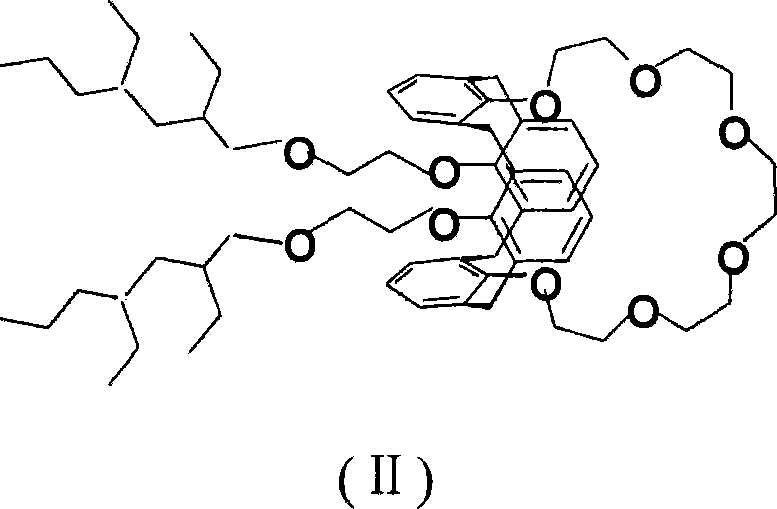Method for separating heating element Cs and Sr from high radioactive waste
A technology of high-level radioactive waste and elements, which is applied in the field of reprocessing of high-level radioactive waste in the nuclear industry, to achieve safe and effective treatment and disposal, good separation effect and easy adjustment
- Summary
- Abstract
- Description
- Claims
- Application Information
AI Technical Summary
Problems solved by technology
Method used
Image
Examples
Embodiment 1
[0050] The preparation of embodiment 1 adsorbent A
[0051] Dissolve 100 g of Calix[4]arene-R14 (with structural formula (II)) and 60 g of tributylphosphate (TBP) in 500 mL of dichloromethane and mix well; add 200 g of polymer-coated macroporous SiO 2 (SiO 2 -P) Stir evenly to volatilize most of the dichloromethane until the material is in a nearly dry state, and then vacuum-dry the nearly dry material at 45° C. for 24 hours.
Embodiment 2
[0052] Example 2 Preparation of Adsorbent A
[0053] Dissolve 100 g of Calix[4]arene-R14 (with structural formula (II)) and 40 g of tributylphosphate (TBP) in 2000 mL of dichloromethane and mix well; add 1000 g of polymer-coated macroporous SiO 2 (SiO 2 -P) Stir evenly to volatilize most of the dichloromethane until the material is in a nearly dry state, and then vacuum-dry the nearly dry material at 45° C. for 24 hours.
Embodiment 3
[0054] Example 3 Preparation of Adsorbent A
[0055] Dissolve 100 g of Calix[4]arene-R14 (with structural formula (II)) and 100 g of tributyl phosphate (TBP) in 3000 mL of dichloromethane and mix well; add 1500 g of polymer-coated macroporous SiO 2 (SiO 2 -P) Stir evenly to volatilize most of the dichloromethane until the material is in a nearly dry state, and then vacuum-dry the nearly dry material at 45° C. for 24 hours.
PUM
| Property | Measurement | Unit |
|---|---|---|
| height | aaaaa | aaaaa |
Abstract
Description
Claims
Application Information
 Login to View More
Login to View More - R&D
- Intellectual Property
- Life Sciences
- Materials
- Tech Scout
- Unparalleled Data Quality
- Higher Quality Content
- 60% Fewer Hallucinations
Browse by: Latest US Patents, China's latest patents, Technical Efficacy Thesaurus, Application Domain, Technology Topic, Popular Technical Reports.
© 2025 PatSnap. All rights reserved.Legal|Privacy policy|Modern Slavery Act Transparency Statement|Sitemap|About US| Contact US: help@patsnap.com



